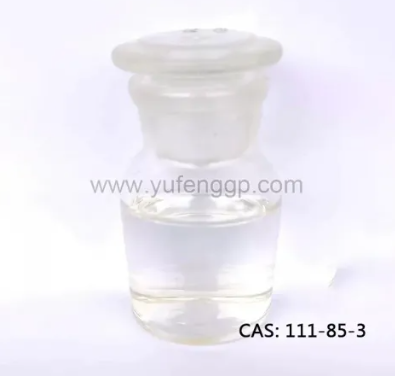Jun. 07, 2023
Chemicals
1-Chlorooctane, also known as octyl chloride, is an important alkyl halide in organic chemistry. This compound belongs to the class of halogenated hydrocarbons and has a wide range of applications in various fields, including pharmaceuticals, agrochemicals, and materials science. In this article, we will explore the properties, synthesis, and diverse uses of 1-chlorooctane.
Properties and Synthesis: 1-Chlorooctane is an organic compound with the chemical formula C8H17Cl. It consists of an eight-carbon alkyl chain (octyl group) bonded to a chlorine atom. This alkyl halide exhibits unique physical and chemical properties due to the presence of the halogen atom. It is a colorless liquid with a characteristic odor and has a boiling point of approximately 184°C.
The synthesis of 1-chlorooctane can be accomplished through several methods. One common approach involves the reaction of octanol (an eight-carbon alcohol) with thionyl chloride (SOCl2). This reaction, known as the chlorination of alcohol, results in the substitution of the hydroxyl group (-OH) with a chlorine atom, leading to the formation of 1-chlorooctane. Another method involves the reaction of octyl bromide with sodium chloride in the presence of a phase-transfer catalyst. Both methods yield 1-chlorooctane as the primary product.
Applications in Organic Synthesis: 1-Chlorooctane finds extensive use as a versatile building block in organic synthesis. Its reactivity makes it a valuable precursor for the introduction of the octyl group into various compounds. For instance, it serves as an intermediate in the synthesis of surfactants, lubricants, and emulsifiers. The octyl group imparts hydrophobicity and surface activity to these molecules, making them useful in detergent formulations, personal care products, and industrial applications.

Furthermore, 1-chlorooctane is employed in the preparation of pharmaceutical compounds. The introduction of the octyl group can modulate the lipophilicity and bioavailability of drug molecules. It is often used as a starting material for the synthesis of anti-inflammatory agents, analgesics, and other active pharmaceutical ingredients. The strategic placement of the octyl moiety in these molecules can enhance their pharmacological properties and optimize drug delivery.
In agrochemicals, CAS 111-85-3 serves as a key component in the synthesis of pesticides and herbicides. By incorporating the octyl group into the molecular structure, the compound can improve the solubility, stability, and efficacy of these agricultural chemicals. The resulting products exhibit enhanced biological activity and target specificity, contributing to effective pest control and crop protection.
Apart from its applications in pharmaceuticals and agrochemicals, 1-chlorooctane plays a significant role in materials science. It can be utilized as a reactive intermediate for the functionalization and modification of polymers. The octyl group can introduce hydrophobicity, chemical reactivity, and compatibility with various matrices, enabling the development of novel polymeric materials with tailored properties. These materials find applications in coatings, adhesives, and other industrial applications.
In conclusion, 1-chlorooctane is a prominent alkyl halide that exhibits diverse applications in organic synthesis. Its versatility as a building block allows for the introduction of the octyl group into a wide range of compounds, making it invaluable in the production of surfactants, pharmaceuticals, agrochemicals, and specialty materials. With its unique properties and reactivity, 1-chlorooctane continues to play a crucial role in organic reactions. Its compatibility with a wide range of compounds and its ability to dissolve both polar and nonpolar substances make it a preferred choice in synthetic chemistry. It provides a suitable medium for conducting reactions and facilitates the separation and purification of products.
In the field of materials science, 1-chlorooctane is utilized in the fabrication of thin films and coatings. It can act as a precursor in chemical vapor deposition (CVD) processes, where it is vaporized and deposited onto a substrate to form thin, uniform layers. These films can exhibit desirable properties such as corrosion resistance, electrical conductivity, and optical transparency, making them valuable for applications in electronics, optics, and protective coatings.
Safety precautions must be observed when handling 1-chlorooctane, as it is a flammable and potentially hazardous substance. Proper ventilation and personal protective equipment should be used to minimize exposure and ensure safe working conditions.
In conclusion, 1-chlorooctane, or octyl chloride, is a versatile alkyl halide with significant applications in organic synthesis, pharmaceuticals, agrochemicals, materials science, and laboratory procedures. Its ability to introduce the octyl group into various compounds enables the development of diverse molecules with enhanced properties. Whether it's contributing to the creation of novel pharmaceuticals, improving the efficiency of agrochemicals, enabling the synthesis of advanced materials, or serving as a solvent in laboratory settings, 1-chlorooctane continues to play a pivotal role in advancing scientific research and innovation. Researchers and scientists will undoubtedly explore its potential further, leading to new discoveries and applications in the future.
Previous: Understanding Refrigerant Gases: Types, Properties, and Applications
Next: Sulfonyl Halides: Versatile Compounds in Organic Chemistry
If you are interested in sending in a Guest Blogger Submission,welcome to write for us!
All Comments ( 0 )